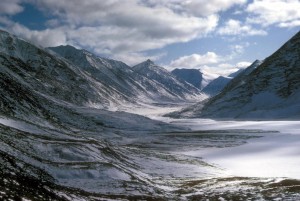THURSDAY, 21 JANUARY 2016
These results from Stockholm University were produced by updating the total area covered by lakes and including the phenomenon of ice-out (melting) during spring. A 23% increase from previous estimates of total methane flux was subsequently found, much of this accounted for by the seasonal thaw. The shape and size of the lakes helps determine their individual methane contributions
The shape and size of the lakes helps determine their individual methane contributionsAll these lakes are dynamic systems, highly sensitive to changes in climate and thus will be affected by the predicted 9°C increase in annual arctic temperature. The ever growing energy input in the summer seasons is projected to enhance microbial productivity which in turn leads to raised emissions. The methane produced, which is a more potent greenhouse gas than carbon dioxide, helps raise temperatures further and lengthen ice-free days, creating a dreaded positive feedback loop. Other impacts of the inevitable warming include more precipitation and snowfall which are all likely to increase organic loading into lakes and further compound emission stats.
The authors of this study conclude with a call for more research regarding the inputs and processes involved, such as the role that microbe play, in the hopes of finding solutions to diminish this newly discovered problem.
DOI: 10.1038/ngeo2578
Written by Shudong Li.
